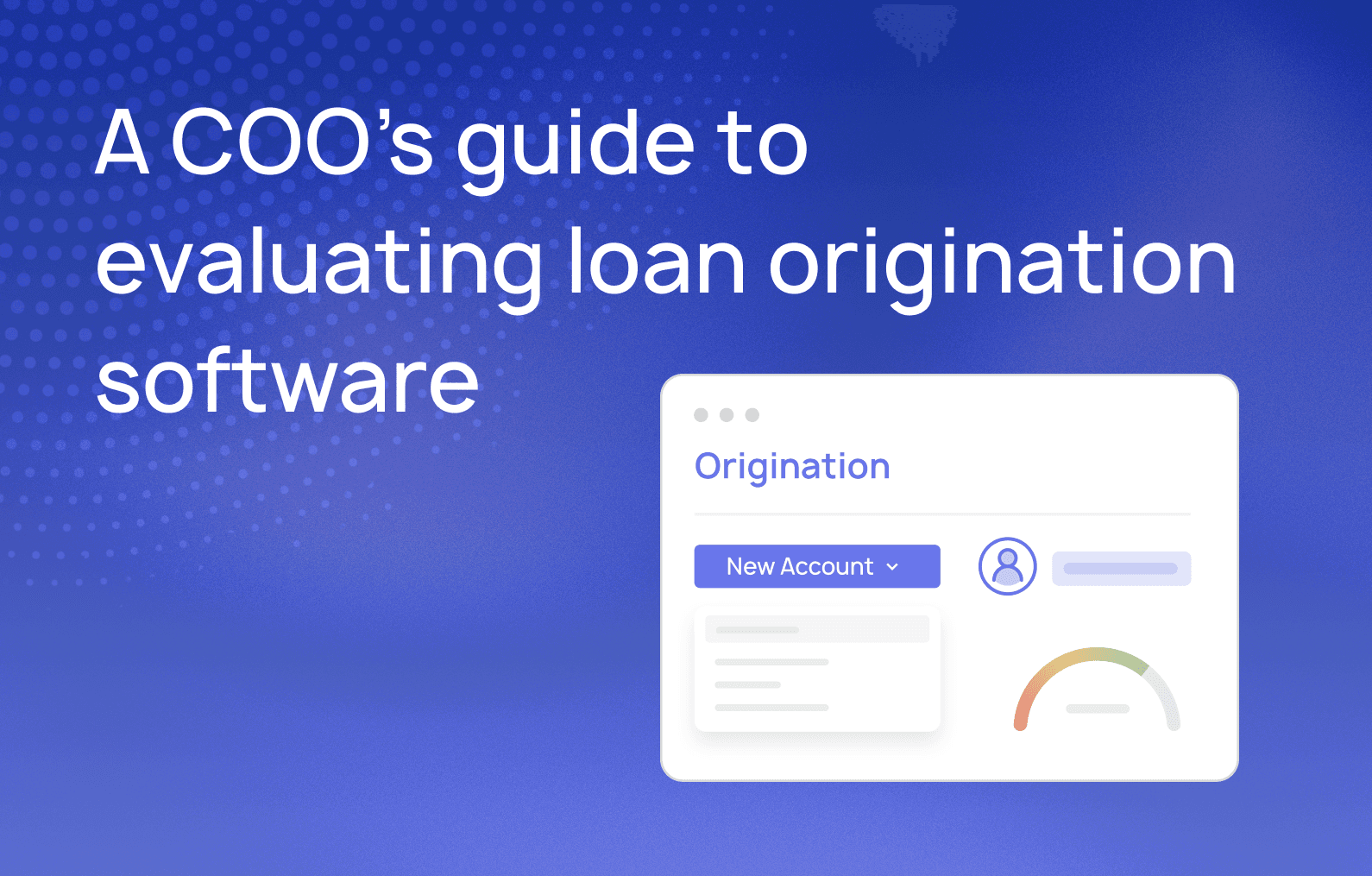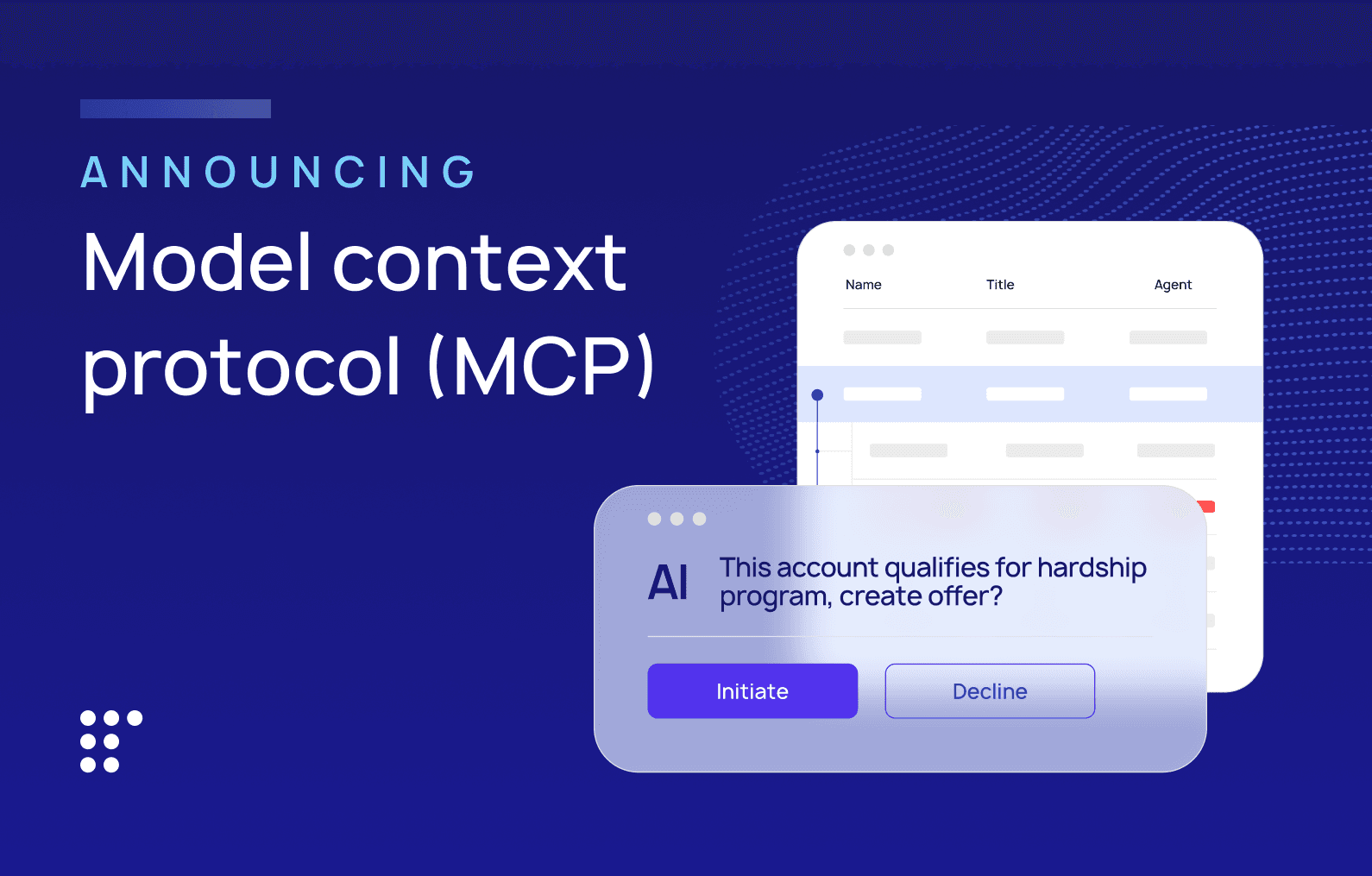Everything you should know about borrower-lender relationships
The role of borrower-lender relationships in loan agreements
When a borrower comes looking for money, they typically see their lender as little more than a source of capital. But you—always forward thinking and perhaps a touch more savvy than the other banks, lenders, or financial institutions you compete with—see the opportunity to turn that one-time transaction into a lifelong partnership with the customer.
It all hinges on developing a strong connection between borrower and lender, the kind of relation that will have them coming to you every time they borrow money. Building that connection is an investment, but it’s one that absolutely pays off in the long run.
5 tips to build a successful lender and borrower relationship
Let’s get down to the key strategies you can use to foster strong professional relationships with your customers.
1. Create trust for a successful financial partnership
We’ve said it before, and we’ll say it again: success in lending hinges on trust. When financial institutions lend money to their customers—be they individuals or businesses—they’re giving out funds with just the promise that those customers will pay them back. At the same time, they’re trusting that you’ll be honest and up front with them, that the interest rates, fees, and other terms operate without unforeseen friction. If they suspect that your firm is deceiving them in any way, there’s no shortage of banks or lenders for them to turn to.
Maintaining healthy connections with those clients in the long run depends on fostering trust. When customers feel like a commodity, they have every reason to shop around with your competitors, looking for the best loans, cards, or capital they can find. And fostering that trust will start with understanding each other’s needs.
2. Tailor lending solutions by understanding both parties’ needs
Your customers’ financial situation is not limited to the problems they present when applying for credit with you. Outside of the immediate resources they’re seeking, they likely have other debt accounts. Depending on their stage in life, consumers will likely have credit cards, mortgages, auto loans, or other debts. They might be contributing to retirement savings, an emergency fund, and other other expenses that feed into their overall financial goals. Taking their broader situation into consideration will help you target the areas where they are still seeking financing.
Even if your financial institution doesn’t specialize in those credit products, you can still offer them products that will benefit their overall financial health. For example, a personal lender isn’t going to start dipping into mortgages just because their customers are looking to buy houses, but they could offer credit builder products that raise borrowers’ FICO scores as they pay off the debt.
Personalized products can help you learn and capitalize on borrowers’ needs. Rather than static loans or cards, consider building credit products that can adapt to each borrower’s behavior and financial goals. New card technologies, like LoanPro’s transaction-level credit, give you more options for personalization. If a borrower is regularly using a card to spend on the same categories, you could give them the option to lower the interest rate on that category, trading off marginal short-term profit for a better borrower experience and long-term returns.
Offering an array of products with different APRs, loan amounts, credit limits, and payment schedules will also let your borrowers sort themselves into products that best fit their budget, income, and spending needs. Understanding their financial situation won’t just help you cross-sell, but build long standing connections with a community of clients.
3. Maintain effective and open lines of communication
Professional relationships are built on clear communication. Few companies would simply omit communication from their lending portfolio management strategy, and yet many of them fail to take advantage of critical communication tools.
Often, this boils down to price. Managing letters, SMS messages, emails, and call centers takes money, and there’s seldom enough money for everything. Sure, in an ideal world you might want to have better communication, but keeping all of those channels running is cost prohibitive (especially in consumer lending, where you manage far more accounts that are individually paying far less than businesses).
The secret here is to invest in technologies that can lower the cost of communication. You can do this in a few ways:
- Automated communication. Regulations from the FTC, CFPB, and other agencies require you to disclose specific information throughout a loan’s lifecycle. Common sense and your own rational self interest suggest you also communicate other information, like upcoming due dates. Luckily, both categories involve regular information being sent out in predictable situations. Smart automations can analyze accounts to find which ones need communications, and then use dynamic account data to send personalized messages. You hold up your legal obligations and keep customers engaged, and you don’t break the bank. Win-win.
- Self-serve tools. If a borrower is calling your help line to figure out how much they owe or ask about a simple due date change, both their time and yours is being squandered. A borrower portal or application with self-serve tools can be game-changing. Let customers track their payments alongside you with real-time data, or even make minor adjustments to their account, like moving due dates. Instead of holding up a phone line and killing their afternoon, they can make those changes with ease. (And don’t worry about borrowers taking advantage of you—smart automations can gate the tools according to your own business logic.)
- Intuitive UI. When an agent has someone on the phone, you can drastically improve their ability to navigate through customer accounts and find the information or tools they need if you give them access to a modern and intuitive UI. Ideally, use a UI system that can adjust for each employee role or even on an account-by-account basis, streamlining the interface for each situation and keeping them on track for each call. This will help your colleagues handle calls faster and with less frustration, improving the experience while also maximizing open lines for other calls.
4. Be transparent during the entire loan process
The Truth in Lending Act, of course, requires some degree of transparency before you fund an account, but developing strong professional relationships with your customers will require more than just calculating and printing interest rates correctly.
A significant number of customer interactions, both with consumer and business accounts, simply boil down to a request for information. (Which makes sense. They have legal obligations to repay you, and rational incentives to track and budget their spending and available capital.) It does not benefit your company to keep their information buried behind bureaucratic red tape which you yourself will need to untangle when customers call.
At the same time, you should be transparent about your own expectations. The recent focus on “junk fees” has less to do with the fees themselves and more with their unpredictability, with consumers complaining that fees are obfuscated deep inside a legalese contract that they don’t understand. Explaining their obligations clearly, repeatedly, and politely will go a long way towards getting paid back on time.
5. Understand the need for flexibility and adaptability
As more banks, credit unions, lenders, and other financial institutions begin to develop practices that foster strong professional relationships with their clientele, more and more of those customers will prioritize flexibility, adaptability, and the trust that underlies them. Rather than seeing flexibility as a nicety, consumers and businesses alike will start to view it as table stakes when they assess credit products from multiple companies.
Winning their business will increasingly depend on crafting and marketing a strong borrower lender relationship.
To some companies, this will sound like making concessions or compromises to attract customers. In truth, it’s more nuanced. No, financial institutions shouldn’t bend over backwards for customers in a way that threatens their profitability. But balancing between customer needs and healthy margins is not a zero sum game, either. If a borrower is cash strapped and struggling to make their obligations, a lender faces not just a risk of short-term delinquency, but a full default on the debt. Adapting to their financial situation with a hardship program will help keep them engaged and enable them to pay back the money in the future.
Given flexibility, a borrower experiencing job loss, mounting debt, or another difficult financial situation can manage their debt payments within their budget, improving the chances that you’ll eventually be paid back in full.
How LoanPro can help you build strong relationships
None of these suggestions can be implemented by fiat—building professional relationships requires conscientious long-term action. And none of them are easy on a legacy platform, with few options to personalize your experience or automate your processes.
That’s where LoanPro comes in. Our modern credit platform gives you the tools to enhance your professional relationships with each of your customers, leveraging custom automations, API-first architecture, and ultimate configurability to upgrade your customer experience. To see how, check out our case study on the flexibility and scalability that we provide Loot.
Or if you’d rather see it hands-on, why not schedule a demo?




